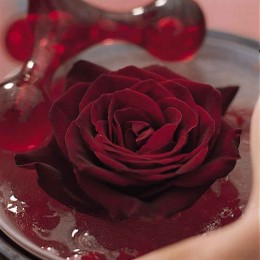
info about the flowers & plants association |
| the latest events in the flower world |
view the latest flower fashion trends |
green & gorgeous – boost your wellbeing with houseplants |
advice on where to buy & recommended retailers |
data & details about the flower industry |
how
to join and what benefits we can offer you as a member |
for
journalists & the media – what we can do for you |
index
of pages on this site to aid your navigation |
|
Roses through the ages
Roses in History:
Clay tablets excavated in the temples of Ur in Iraq speak of the delivery of rose
water intended for the sultan of Bagdad. The sultan used no fewer than 30,000
jars of rose water a year, to make his rooms smell nice for his extensive harem.
The Saracen general Saladin sent camel caravans loaded with rose water through his empire to cleanse the mosques after 'impure' crusaders had occupied the prayer rooms. Until the early 19th century dried rose petals were believed to have mysterious powers. Napoleon gave his officers bags of rose petals to boil in white wine, to cure lead poisoning from bullet wounds, Even today, rose water is still used to refresh the hands before a feast or festive greeting, from the Middle East to northern India. Cleopatra covered the floors of her palace with a thick layer of rose petals every day. The mattresses and pillows of her bed were stuffed with rose petals. There is a special rose language invented as a secret means of communication between lovers who were not allowed to express their love for one another openly in the harems of the Middle East. In the mid 18th century Lady Mary Wortley Montagu, the wife of the British ambassador in Constantinople, described this in her letters, which were published after her death. These letters inspired many books on the language of flowers, each describing the secret message hidden in each flower. A red rose bud stands for budding desire, while an open white rose asks "WIll you love me?". An open red rose means "I'm full of love and desire", while an open yellow rose asks "Don't you love me any more?".
| |

|